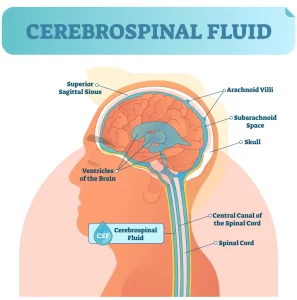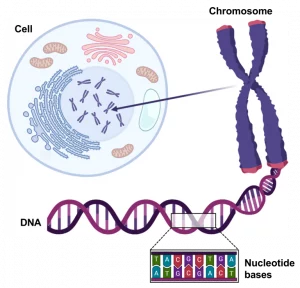
Snapshot: What is intelligibility?
Speech intelligibility refers to how many words can be correctly understood by a listener. For example, if someone says the phrase, “My name is John,” and a listener hears, “My Read More…
The Ataxia Community Comes Together in Orlando April 9–11, 2026 for the Annual Ataxia Conference! LEARN MORE
A collection of resources for individuals and families affected by CANVAS.
CANVAS is caused by a genetic mutation that is passed on from parents to their children. CANVAS leads to problems with balance and coordination, issues with sensory nerves, and loss of reflexes related to balance.
For complete information about symptoms, diagnosis, and treatment of Ataxia, visit our What is Ataxia? page. This page contains NAF’s resources that are specific to CANVAS.
Sign up for our mailing list to stay up-to-date on Ataxia news.
Presented by David Szmulewicz, PhD
This webinar gave an overview of the causes and symptoms of CANVAS, the typical diagnostic journey for those affected, and what to expect for clinical care.
Presented by Andrea Cortese, MD, PhD
This webinar taught us how CANVAS is studied and gave an overview of the current state of research and drug development for the disease.
Participating in a research study or clinical trial is one way to take an active role in furthering understanding and treatment of Ataxia. It is also a way to get access to new treatment options before they are widely available. To find studies that are enrolling patients, visit our Help Develop New Treatments page.
CANVAS is a rare neurodegenerative disorder. CANVAS is an acronym meaning Cerebellar Ataxia (CA), Neuropathy (N) and Vestibular Areflexia (VA) Syndrome (S). As the cause of CANVAS was only discovered in 2019, there remains a lot we do not know about this condition. This includes how common CANVAS is. From initial research, CANVAS has been found across the globe, affecting people from all ethnic backgrounds.
As more people are diagnosed with CANVAS and more research is completed, we will have a better understanding of this disorder. This page will be updated with new information as it becomes available.
CANVAS is an acronym for the three most common symptoms caused by this disorder. Most people with CANVAS have at least two of the three common symptoms:
It is also common for people with CANVAS to have an unexplained, chronic cough. Sometimes this is the first symptom noticed by patients. Less common symptoms include chronic constipation, urinary difficulties, or altered sweating (too much or too little).
The age at onset of CANVAS symptoms is usually around 50 years old. However, there can be a lot of variation, with some people having symptoms early in their 20s or later in their 70s. Since the first signs of CANVAS can be subtle, such as a cough or small changes to your sense of touch, some people don’t notice when symptoms first occur. It can be decades later, when balance symptoms begin, that people seek help from a neurologist. The severity and combination of CANVAS symptoms also vary considerably, even within families.
CANVAS usually progresses very slowly. Most people with CANVAS will eventually use upright walking aids such as a cane or rollator. However, most do not require the use of wheelchairs until much later in life. Lifespan generally is not shortened by the disease. Treatments such as physiotherapy, occupational therapy, and speech-language therapy can significantly improve the lives of people with CANVAS.
CANVAS is a genetic disorder which means that it is an inherited disease. The abnormal gene responsible for this disease is passed along from generation to generation by family members who carry it. Genetic diseases like CANVAS occur when one of the body’s 20,000 genes does not work properly. Genes are microscopic structures within the cells of our bodies that contain instructions for every feature a person inherits from his or her parents.
CANVAS is an autosomal recessive disease. This means that you need two copies of the gene that causes CANVAS to develop this disorder. It also means that individuals of either sex are equally likely to inherit the gene and develop the disease.
Each child of a person with CANVAS has a 50 percent chance of inheriting the gene that causes CANVAS. However, since you need two copies of the CANVAS gene to develop the disorder, people with one CANVAS gene do not get sick. We call these people carriers, since they have the CANVAS gene and can pass it on to their children. If two people who carry the CANVAS gene have children, they have a 25 percent chance of having a child who inherits two CANVAS genes and develops CANVAS.
In the case of CANVAS, it is caused by a mutation called an AAGGG repeat expansion in the RFC1 gene. Healthy RFC1 genes typically have a repeat called AAAAG, but in CANVAS the ratios of A and G are messed up. Whether or not you develop CANVAS depends on how many AAGGG repeats you have.
There are other types of mutations in the RFC1 gene that have been discovered to cause CANVAS. However, the research is so new on these mutation types that we don’t fully understand why they cause CANVAS yet. More research is needed.
Gene tests can be performed for diagnostic purposes to determine what kind of Ataxia is within a person or family. Genetic testing also can be done, in some circumstances, even before there are symptoms to determine whether a person carries the abnormal gene or genes that cause Ataxia. This is called predictive or presymptomatic testing. A gene test also can be used to determine whether a fetus has an abnormal Ataxia gene. This is called prenatal testing. Anyone who is considering a predictive or prenatal test should consult with a genetic counselor to discuss the reasons for the test, the possible outcomes, and how those outcomes might affect the person emotionally, medically, or socially.
A neurologic examination can determine whether a person has symptoms typical of CANVAS. A neurologist is often the most helpful specialist in recognizing symptoms and diagnosing the disease that causes Ataxia. Due to the variety of CANVAS symptoms, follow-up testing may look different from individual to individual. Some potential follow-up tests include MRI brain imaging, vestibular testing, or sensory neuropathy testing.
A definitive diagnosis of CANVAS is established following genetic testing. This confirms that someone has the number of AAGGG repeats needed to cause CANVAS. Genetic testing for CANVAS is currently available through the University of Chicago and other academic centers around the world.
SCAsource provides Ataxia research news, directly from researchers to the Ataxia community. Visit SCAsource to see their full collection. Here is a collection of articles relevant to CANVAS.

Speech intelligibility refers to how many words can be correctly understood by a listener. For example, if someone says the phrase, “My name is John,” and a listener hears, “My Read More…

Speech not only consists of the words we say, but how we say them. That “how” is what is called prosody: the pitch, loudness, and timing of speech. The term Read More…

Written by Ziyang Zhao Edited by Dr. Hayley McLoughlin A newly developed smartphone application will allow patients to assess ataxia at home. There’s an interesting problem in science that’s often Read More…

Public transit may not be the first thing that comes to mind when we think about the brain, but it’s a great way to understand how all the parts of Read More…

A gene is the basic physical unitof heredity. Every living cell contains genetic information that determines an organism’s development, form, and function. This genetic information is encoded by two macromolecules: Read More…

What is a recessive disorder? A recessive disorder is one that has a specific disease mechanism. For a recessive disorder to occur, both copies of the causative gene must be Read More…
This group is for people who have been, OR are in the process of being diagnosed with CANVAS OR are a caregiver to someone with CANVAS (Nurse, Doctor, family member).
